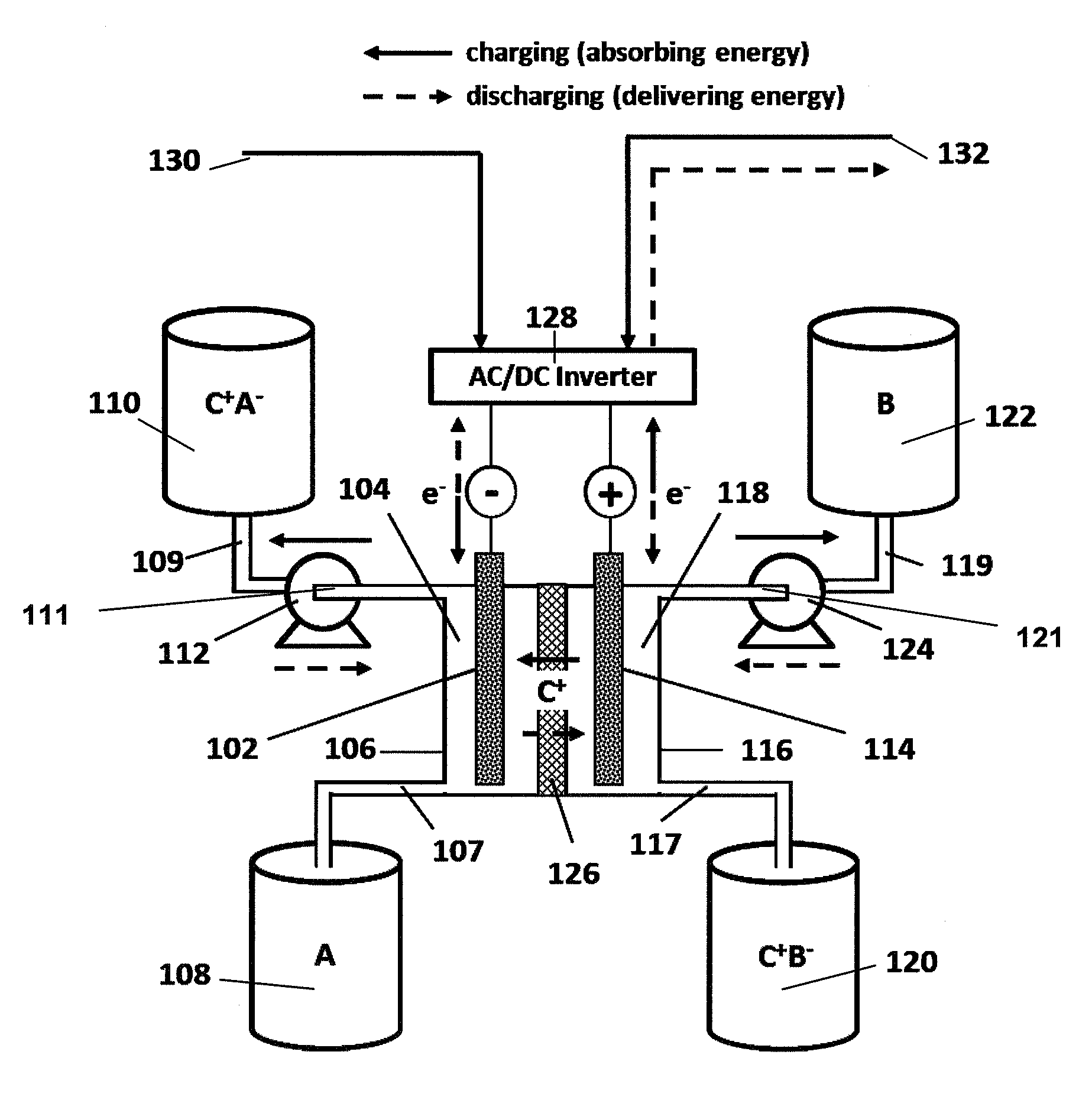Organic non-aqueous cation-based redox flow batteries
a redox flow battery, organic technology, applied in the direction of indirect fuel cells, cell components, electrochemical generators, etc., can solve the problems of not being able to be directly connected to the grid, limited by the electrochemical properties of water, and not having experienced widespread commercialization
- Summary
- Abstract
- Description
- Claims
- Application Information
AI Technical Summary
Problems solved by technology
Method used
Image
Examples
examples
[0072]2,5-Di-tert-butyl-1,4-bis(2-methoxyethoxy)benzene (“DBBB”) is a redox material developed at Argonne National Laboratory for overcharge protection in Li-ion batteries [19]. DBBB has been shown to be active, at about 4.0 V vs. Li / Li+, for 200 cycles of 100% overcharge in a Li-ion cell, which is approximately equivalent to 10,000 redox cycles. Moreover, the material is not air sensitive and exhibits no side reactions at any potential lower than the redox potential. FIG. 2a shows the cyclic voltammograms of 0.005 M DBBB dissolved in an electrolyte consisting of 1.2 M LiPF6 in ethylene carbonate / ethyl methyl carbonate at a volume ratio of about 3 to 7 (“Electrolyte A”) at scan rates ranging from 5 to 200 mV / s. DBBB displays a well-defined reversible redox couple with a redox potential of about 3.927 V vs. Li / Li+, based on the average of the anodic and cathodic redox potentials [(Epa+Epc) / 2]. The diffusion coefficient of DBBB was determined to be about 1.30×10−6 cm2 / s in the battery...
PUM
| Property | Measurement | Unit |
|---|---|---|
| charge/discharge currents | aaaaa | aaaaa |
| volume ratio | aaaaa | aaaaa |
| diffusion coefficient | aaaaa | aaaaa |
Abstract
Description
Claims
Application Information
 Login to View More
Login to View More - R&D
- Intellectual Property
- Life Sciences
- Materials
- Tech Scout
- Unparalleled Data Quality
- Higher Quality Content
- 60% Fewer Hallucinations
Browse by: Latest US Patents, China's latest patents, Technical Efficacy Thesaurus, Application Domain, Technology Topic, Popular Technical Reports.
© 2025 PatSnap. All rights reserved.Legal|Privacy policy|Modern Slavery Act Transparency Statement|Sitemap|About US| Contact US: help@patsnap.com



